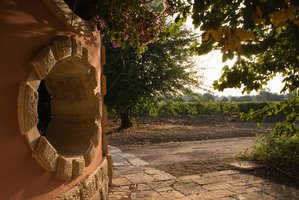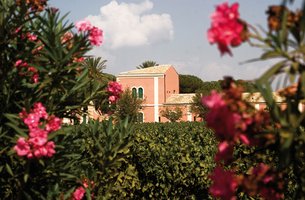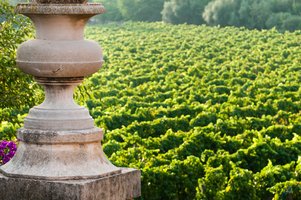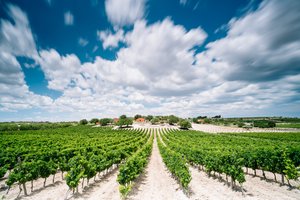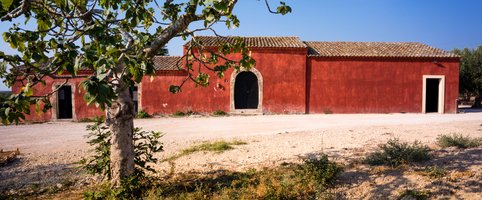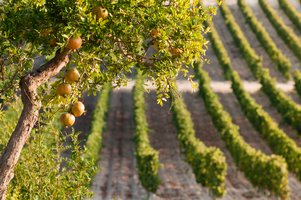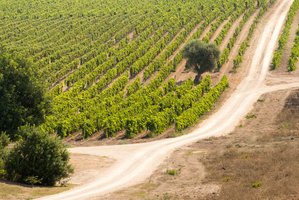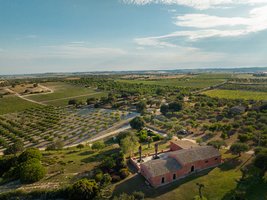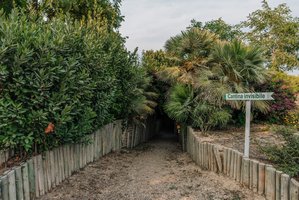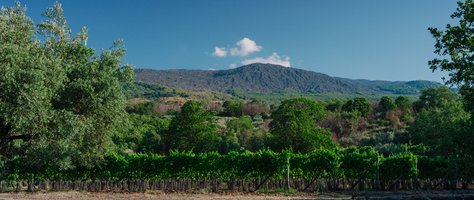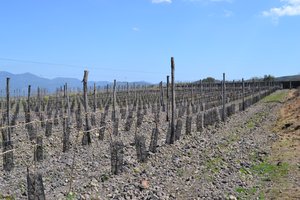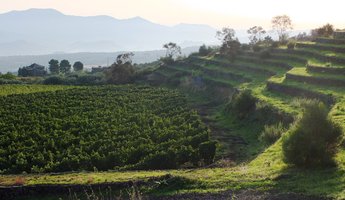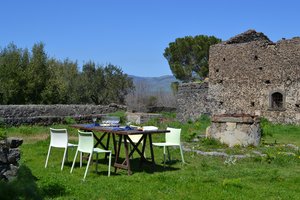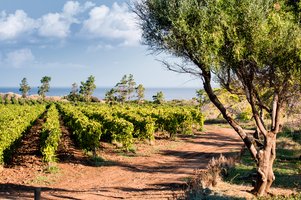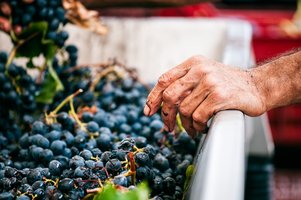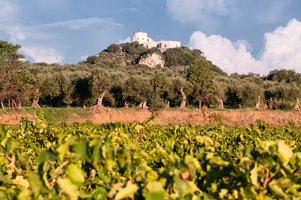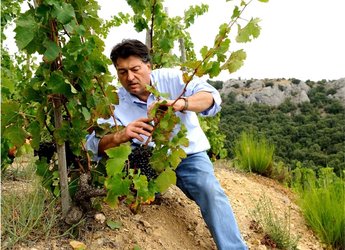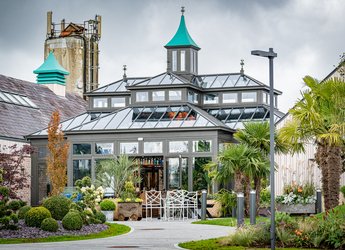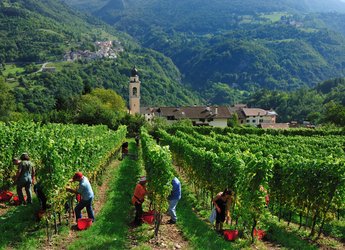

Planeta Icons of Fine Sicilian Wine
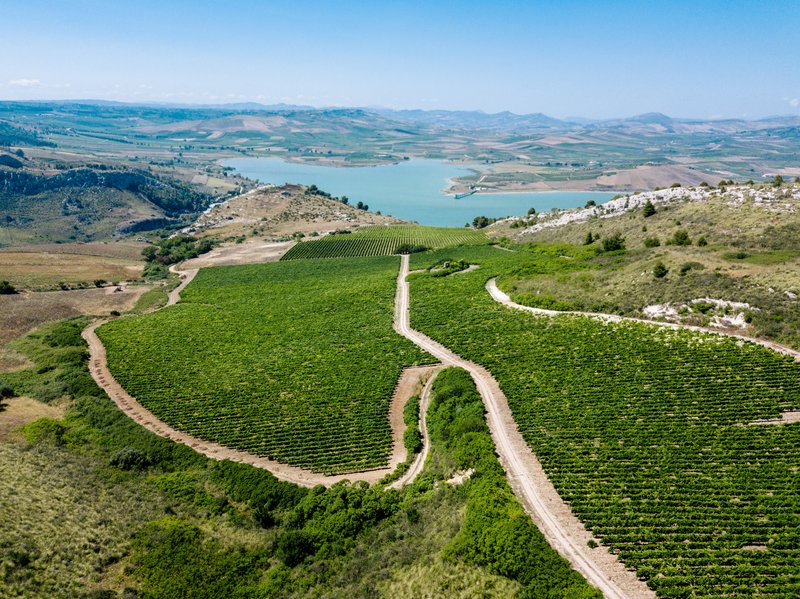
Picture it: Sicily, 1984. A local family whose farming roots stretch back 17 generations embarks on a new adventure in wine, beginning at their 16th-century farmhouse in the village of Sambuca di Sicilia, not far from the seaside enclave of Menfi. While it was Grandfather Vito who initially sparked the transformation of their modest plot of vines into something much larger, it was his son, Diego Planeta, who would go on to develop a hugely successful collective of skilled grape growers. His vision became a model for developing and advancing Sicilian wine culture. And it was only just the beginning.
As Diego became a force for progress, his daughter Francesca and nephews Alessio and Santi were embarking on their own mission — one that would unequivocally link the Planeta name with Sicily’s finest wines.
Over the next three-plus decades, anchored by their Ulmo and Dispensa estates in Menfi, they traveled west to east — first to Vittoria, then on to Noto, Etna, and finally Capo Milazzo — tracing a thoughtful path around the island and establishing dynamic new properties in each unique territory. From the beginning through present day, the family have always been a seamless unit, with Alessio overseeing the winemaking and viticultural aspects, Francesca spearheading a flourishing enotourism program, and Santi managing their expanding business operations. A strong sense of family is at the core of everything they do.
The Planetas refer to Sicily as a continent unto itself — with good reason. The island may be small, but what it lacks in square miles it more than makes up for with its staggering diversity of soils, elevations, and climatic influences. It is through the lenses of their six boutique wineries, across five regions, that the family creates the ultimate expressions of Sicilian wine. We believe they are only just scratching the surface of the island’s potential.
Today, Planeta is still a beacon of innovation, who’ve pioneered the matching of local soil types with their ideal native and international grapes. It is an accomplishment and an ethos that altered the course of Sicilian wine — to each territory, its own winery. Combined with their fearless, open-minded approach to winemaking, they skillfully strike “equilibrio” (balance) with every wine of place they craft. Thus positioning themselves, and Sicilian wine as a whole, squarely on the global stage of fine wine.
Where It All Began ...
Menfi and its rolling hills have been home to the Planetas for 17 generations, starting with the ancient stone “baglia” (farmhouse) that came into the family with a wedding dowry in 1694. Bookended by ancient Lake Arancio and the Mediterranean Sea, the dual estates of Ulmo and Dispensa are the beating hearts of Planeta family life and the collective nucleus for their groundbreaking pursuits in viticulture and winemaking. In addition to their main wineries here, the property also houses the family’s private collection of wine from all over the world — including the full library of Planeta vintages back to 1985 — and an actual library that holds hundreds of antique volumes dedicated to vines and wine.
Also occupying this sun-drenched realm are thousands of olive trees, cultivated by the Planetas for their craft olive oil production, and all manner of fauna (porcupines, birds of prey, foxes, owls), all thriving in the beautiful tangle of wild herbs that slopes gently down to the sea.
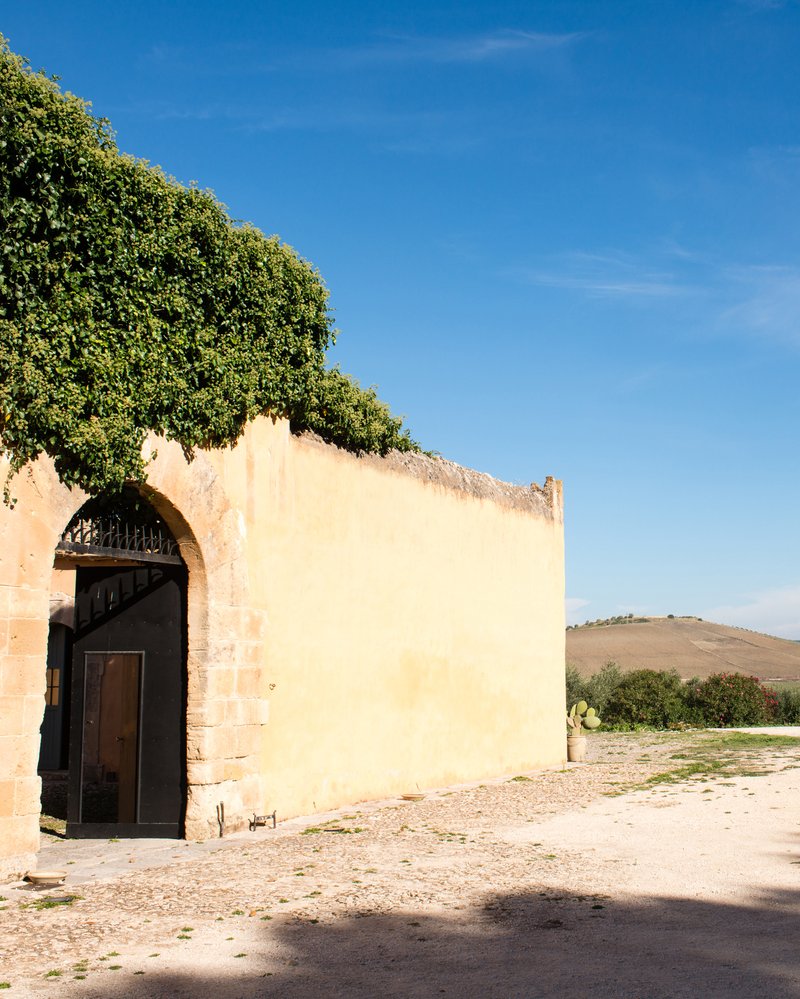
Terroir & Viticulture
On the banks of Lake Arancio, edged by nearby woodlands and the wildflower-studded La Segreta nature trail, the Ulmo terroir gives rise to Planeta’s most iconic varieties, including chardonnay, the first vine Diego Planeta planted and a grape that remains emblematic of the family’s pioneering mission.
Ulmo is divided into two vineyards. The eponymous Ulmo Vineyard comprises 59 hectares / 146 acres of chardonnay, nero d’avola, grillo, grecanico, merlot, and more. It was planted in 1985, a decade before the winery was built, at altitudes reaching 400 meters / 1,312 feet. The deep alluvial soils here become rich in lime and chalk deposits the higher up you are and the slope ensures perfect drainage (average growing season rainfall across both Menfi estates is 154 millimeters / 6.06 inches).
The Maroccoli Vineyard, planted in 1999, is 42 hectares / 104 acres of chalky soils with abundant loamy sections, planted at altitudes reaching 415 meters / 1,362 feet. This site enjoys a spectacular microclimate, blessed by warm Mediterranean breezes. It is planted to syrah, petit verdot, merlot, and others with a mix of espalier, spurred cordon, and Guyot trellising. Planting densities range from 3,800 to 5,000 vines per hectare.
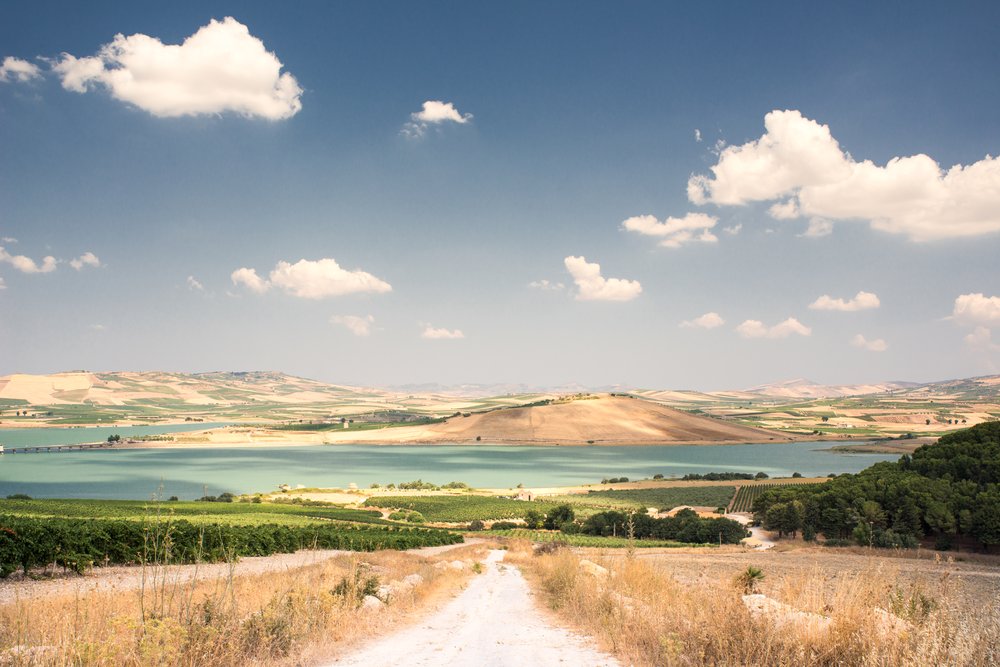
Terroir & Viticulture
Like Ulmo, the Dispensa estate is broken up into two bespoke vineyards that total 160 hectares / 395 acres. The Dispensa Vineyard, planted in 1996 and totaling 115 hectares / 284 acres, sits on medium-depth lime soils mixed with yellow and dark gray chalk of a moderately fine texture. Little gravel is present, which is ideal for the international varieties this site grows, including viognier, merlot, and cabernet sauvignon; also for the native grillo, nero d’avola, and fiano. Trellising is a mix of the espalier and spurred cordon systems at a planting density of up to 4,500 vines per hectare.
The Gurra Vineyard was also planted in 1996 and is divided into two microzones; one is a mix of red sand and gravel (perfect for syrah) and the other is a chalk-rich limestone base (which enhances the aromatics in fiano). Trellising systems here include espalier, Guyot, and spurred cordon with planting densities between 3,800 and 5,000 vines per hectare.
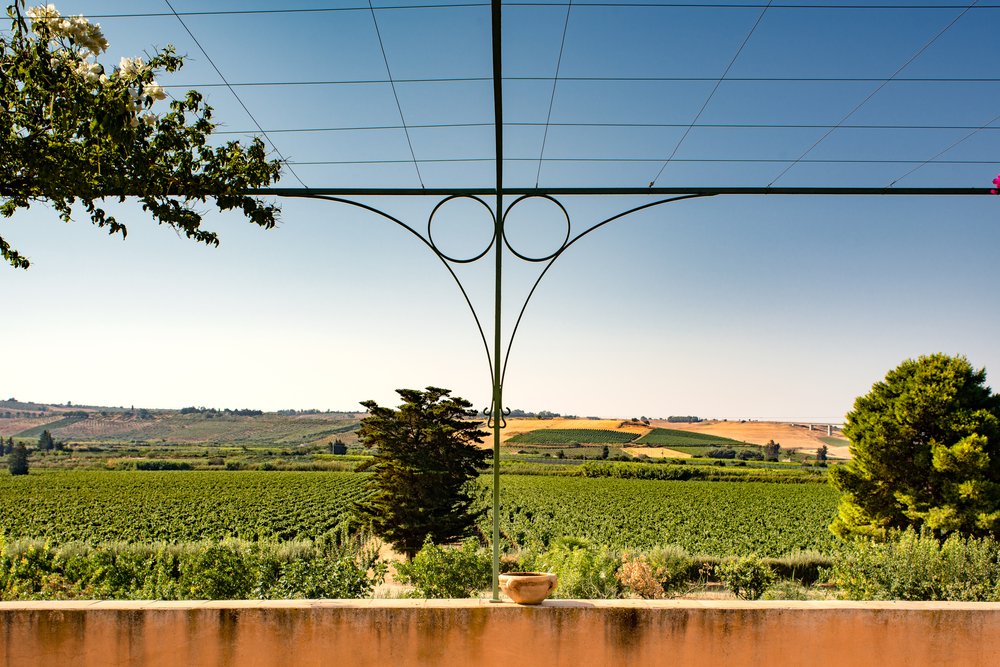
The Irresistible Pull of Cerasuolo
The Planetas set their eyes on Vittoria, drawn by a shared fascination for Cerasuolo di Vittoria (the only DOCG in Sicily) and for frappato, the red grape that gives Cerasuolo its unmistakable presence. Standing in this territory’s iconic, red-sandy soils, you can glimpse the beaches where the Allies landed in 1943 before casting your eyes northward to take in the dramatic rise of the Iblei Plateau.
The Planetas purchased the 35-hectare / 87-acre Dorilli estate and its large country house in 1997. They lovingly restored the 1900s-era Liberty-style property (the Italian variant of the Art Nouveau movement) to its former glory; today, its lovely, flowering courtyard is a favorite spot for guests to unwind with a glass of Cerasuolo and perhaps a plate of Planeta’s homemade pasta and salsa di pomodoro — Vittoria is a noted spot for rare and flavorful tomato cultivars.
Terroir & Viticulture
The two vineyards on this property, Dorilli and Mogli, are planted exclusively to nero d’avola and frappato. Following the strict regulations of the Cerasuolo di Vittoria DOCG, which require a nero d’avola content of at least 50%, they have reserved a majority of each vineyard for that grape. The special soils here, fine red sands and limestone with exceptional permeability, confer unique aromatic and structural characteristics to the grapes, giving Cerasuolo its trademark magic in the glass.
The vineyards extend to a combined 34 hectares / 84 acres; espalier and spurred cordon trellising is typical, with planting densities at 4,500 vines per hectare.
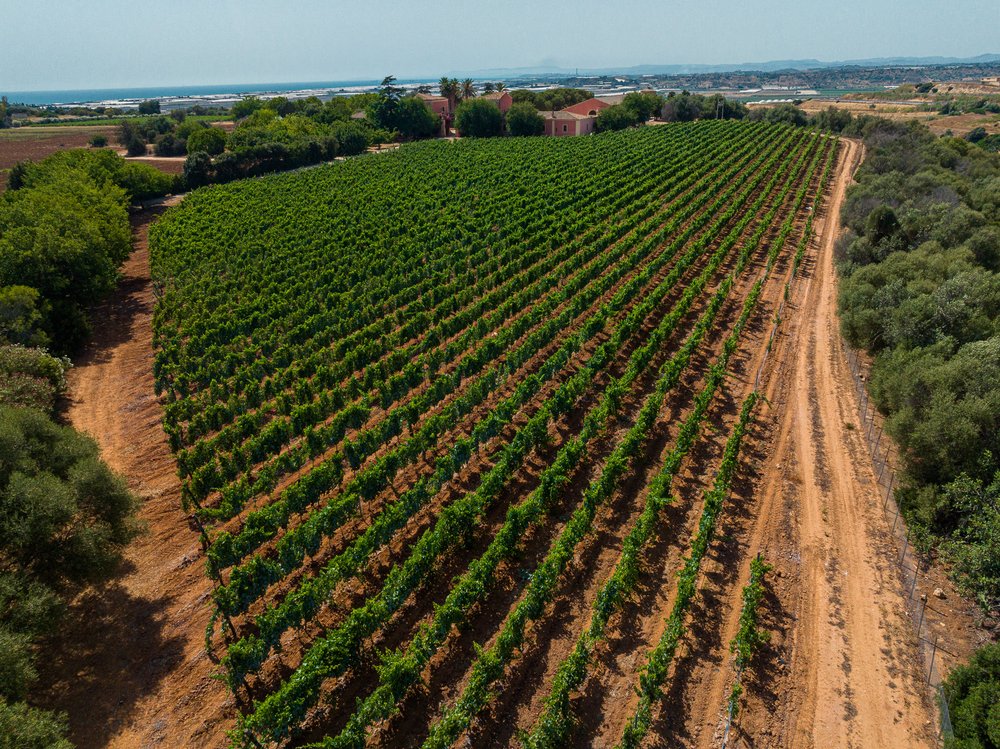
Agriculture & Architecture
It’s perhaps fate that Planeta’s southern outpost at Noto, the third stop on their Viaggio in Sicilia, came with the name Buonivini, or “good wines.” Enamored with the dazzling white sands and gentle hills tumbling down to the Mediterranean, the family set out to build an “invisible winery.” Completed in 2003, it was an ambitious architectural project and remains the embodiment of their unwavering respect for the countryside.
The winery, daring in its clean, square lines, is mostly hidden away — built within a hillside, with only the jewel-like garden of fruit trees and herbs immediately visible to newcomers. The first level is devoted to winemaking, opening wide and directly out onto the vineyards; the cool, subterranean second level serves as a barrel cellar.
Noto is the native home of nero d’avola and moscato bianco, which are planted (along with patches of merlot and mandorleto) across a trio of vineyards spanning 40 hectares / 98 acres, tucked between the groves of carob, olive, and almond trees.
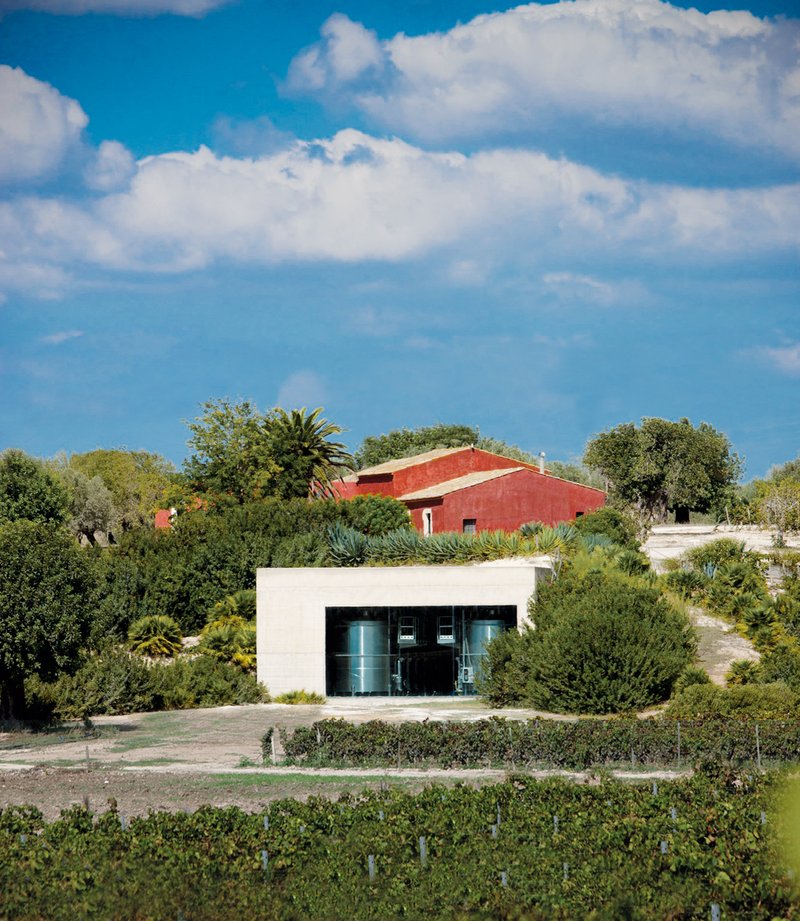
Terroir & Viticulture
Buonivini enjoys an extreme microclimate, boasting one of the lowest average rainfall totals in Europe and benefitting from the breezes that arise from the meeting of the Mediterranean and Ionian Seas. The chalky-white soils of marine origin comprise a high concentration of calcareous limestone and have excellent water retention properties.
The Planetas acquired the land here piece by piece, recovering and cultivating 40 hectares / 98 acres across three sites: the Agliastro Vineyard, Buonivini Vineyard, and Zuppardo Vineyard. Vines are trained on a mix of espalier, spurred cordon, and unilateral Guyot with planting densities ranging from 3,800 to 5,000 vines per hectare.
Peak Volcanic Wine Territory
The legendary, decade-long eruption of Mount Etna in 1614 was the longest ever recorded — it shaped both the history of the region and the zone’s viticultural future. The lava flow from this epic event left behind black, mineral-rich volcanic soils, forming an incredible foundation for viticulture that the Planetas discovered in 2006 when they (excitedly) acquired the Sciaranuova property.
They went on to plant several sites over the next few years and, with their signature mindful approach, built the Feudo di Mezzo winery in 2012, knitting the building’s frame together with the surrounding countryside. The winery sits atop a rock garden left behind by another lava flow, dating to 1566, and is constructed primarily from Etna’s black stone. The cellar is fashioned to resemble an old stone mason’s workshop — combining bio-architecture with an activity of cultural significance.
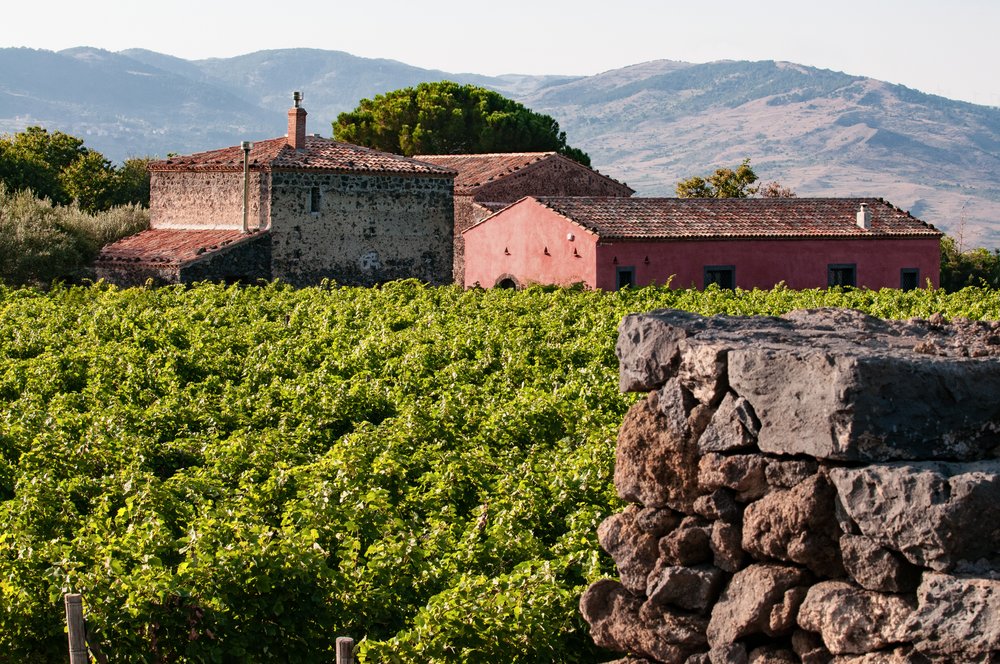
Terroir & Viticulture
The Etna zone arcs around the eastern side of the volcano, from Randazzo in the north to Santa Maria di Licodia in the south. The graduated topography creates a smooth spread of mesoclimates, as the land climbs up from near-sea-level to more than 1,200 meters / 3,937 feet — Italy’s highest vineyards.
Planeta’s five Etna vineyards — Sciaranuova, Montelaguardia, Torreguarino, Piertramarina, and Rampante — are all planted on the northern side of the mountain at seriously windswept elevations. Each site is the epitome of rugged mountain viticulture, but the native varieties they’ve planted thrive, especially carricante and nerello mascalese, which they’ve dubbed “The King of Etna.” Vines are trellised on various systems including espalier, spur cordon, and Guyot. Rainfall averages around 276 millimeters / 10.87 inches in the growing season
Interestingly, Sciaranuova, Planeta’s Etna “cru,” falls outside the perimeter of the official Etna DOC. Boundaries aside, the family have demonstrated that this microsite is blessed with extraordinary soil material and climactic conditions that impart incredible nuance to the wines.
Beauty, Research, and Social Responsibility
Capo Milazzo — with its dramatic, craggy point rising sharply out of turquoise waters — is remarkably beautiful, even by Sicilian standards. But the beauty here is deeper than surface level.
In partnership with the Fondazione Lucifero, Planeta has managed the agricultural restoration of this property since 2011 — replacing dying undergrowth with new vines and flourishing nature paths, encouraging sustained biodiversity. In 2013, they constructed their revolutionary La Baronia estate, a tiny “collapsible” winery constructed with light and biodegradable materials that can easily be disassembled and removed, minimizing the long-term impact on the land.
La Baronia is the smallest Planeta property, but carries a larger, two-fold purpose. It aims to further their viticultural research with the restoration and production of several ancient varieties (including mamertino, among the oldest wines of the island and a reported favorite of Julius Caesar’s). Additionally, income from the vineyard contributes to Fondazione Lucifero’s work with children in need. Thus, La Baronia symbolizes Planeta’s vision of what sustainable viticulture really means — not only in terms of cultivation and production, but also from an environmental, cultural, and socioeconomic standpoint.
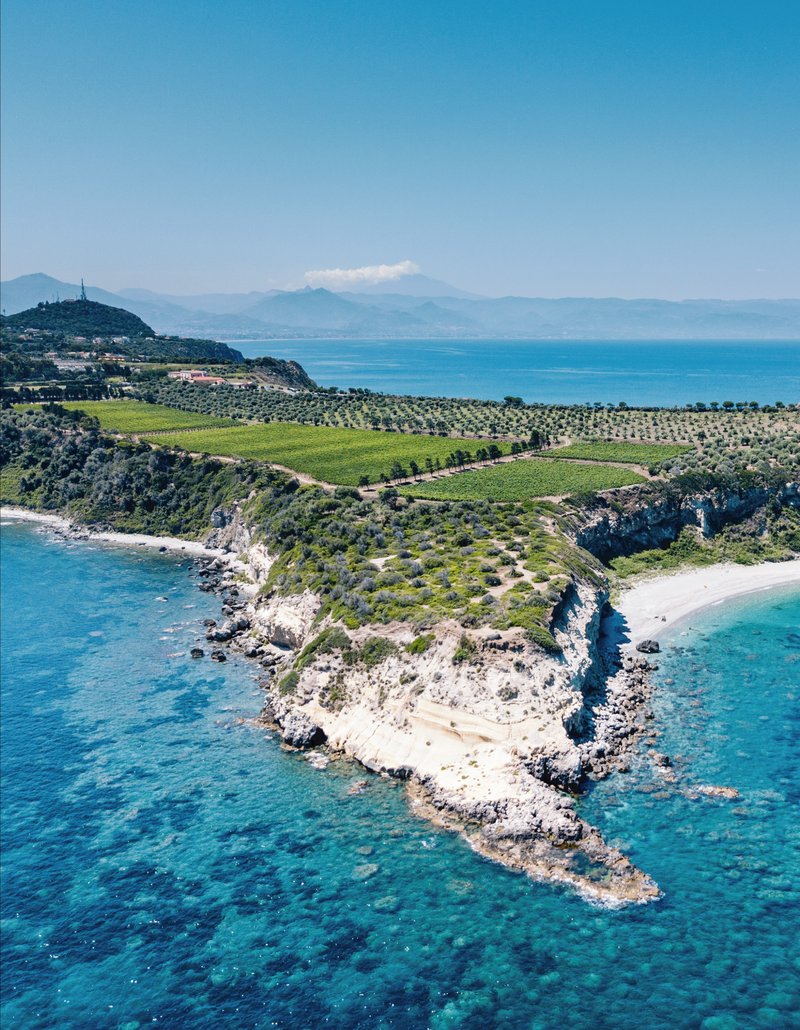
Terroir & Viticulture
Planted on alluvial soils, half of La Baronia’s vineyard area is producing grapes for Planeta’s Mamertino DOC — 60% nero d’avola, 40% nocera. In the remaining soils, they’ve introduced experimental plantings of three other ancient varieties: vitraruolo, lucignola and catanese nera.
They have chosen systems of viticulture in keeping with the coastal territory, using training systems typical of marine areas like alborello, and there is no irrigation.

